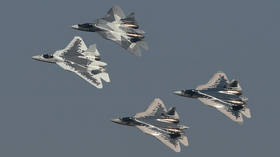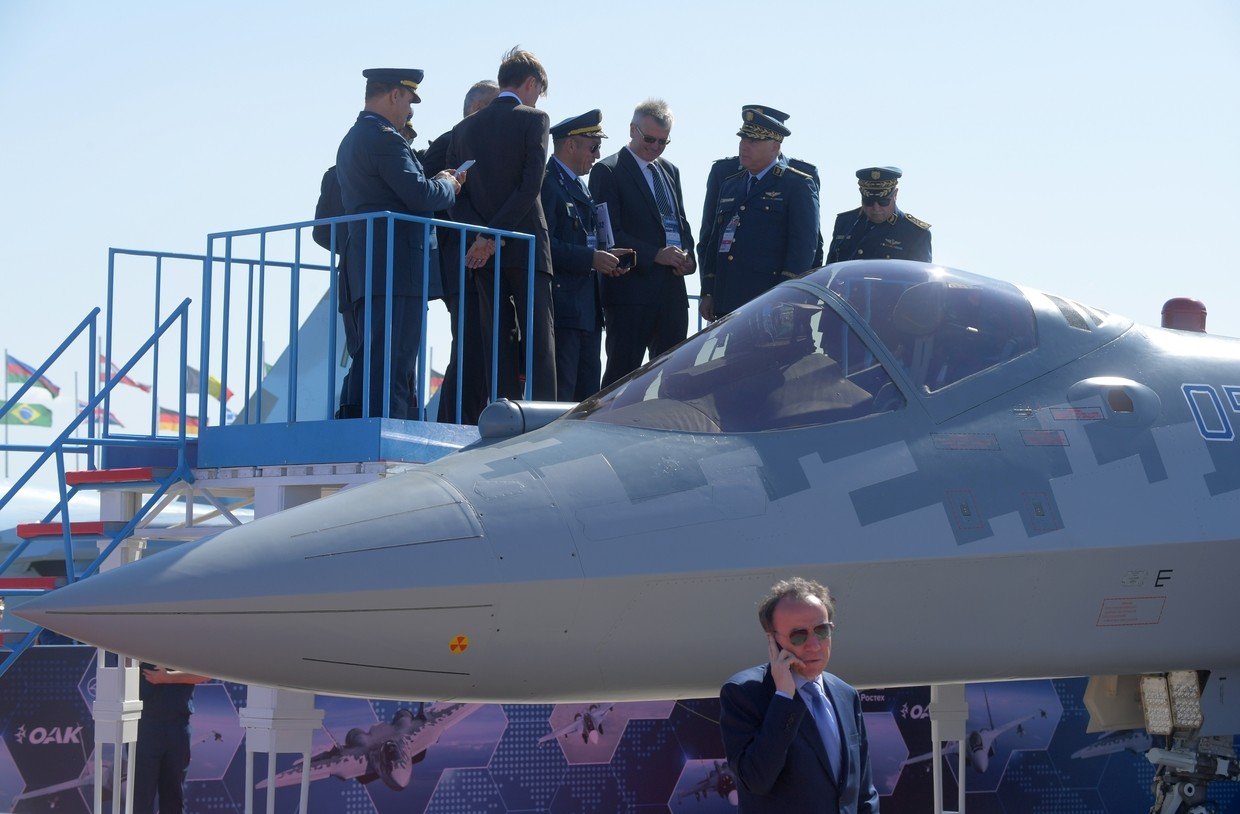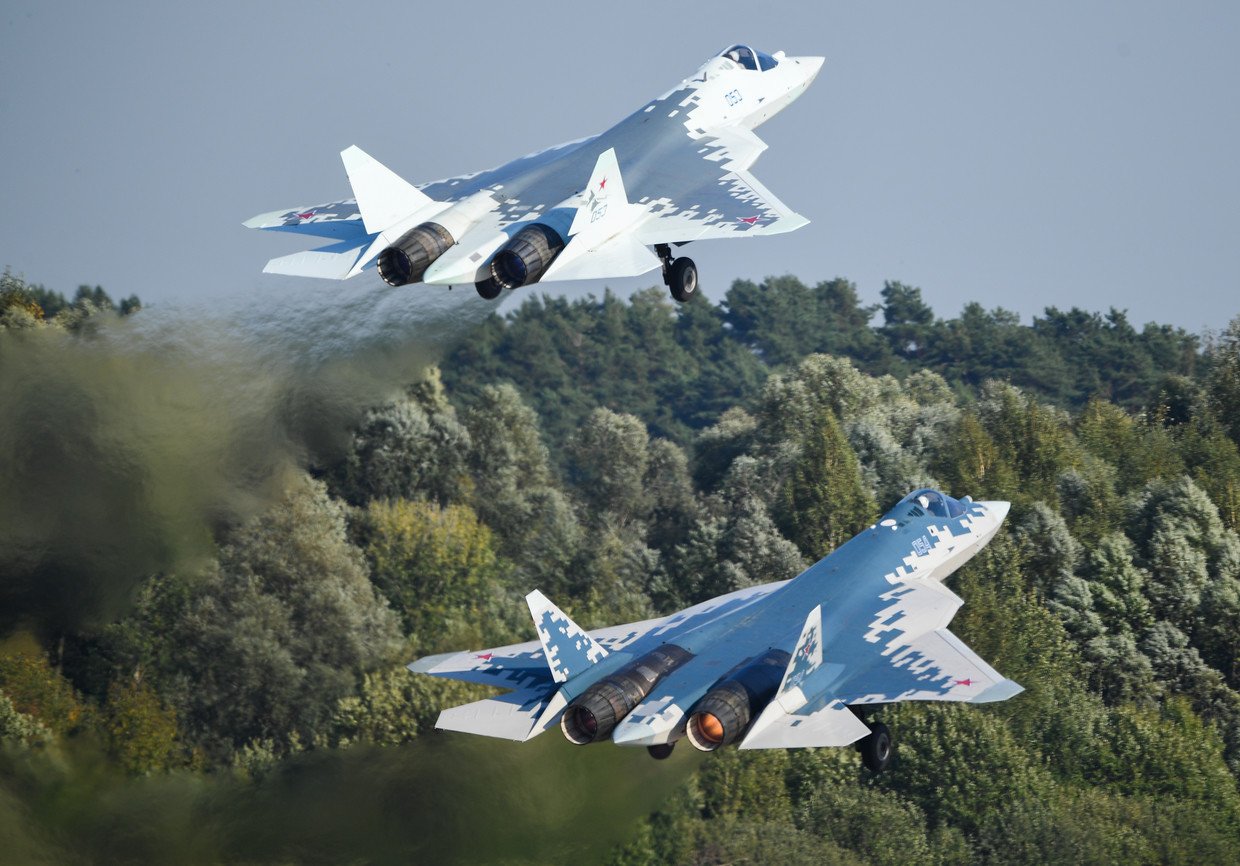US being picky on who gets F-35 may prove handy for Russia & help its Su-57 satisfy intl demands for 5-th generation fighters

Russia’s most advanced fighter, the 5-th generation Su-57, is slated to become not only the future backbone of the national air force, but also a success in the international market – provided the technology gets matured fast.
During the MAKS air show near Moscow eairlier this year Sukhoi advertised for the first time the export version of its flagship project, the Su-57. And in November pictures emerged of the Russian aircraft going into series production – a major milestone for any complex weapon system.

RT spoke about the future of the jet with Vadim Lukashevich, who worked as an aircraft engineer for Sukhoi between 1985 and 1992 and later became an independent aviation expert. He says the aircraft indeed has the potential to be a major hit in the market, but that won't come without fullfiling certain terms.
“Once the Su-57 reaches the stage where it meets all requirements for a 5th generation fighter jet, and if it proves to be good, the potential for export will be really huge,” he said.
The range of potential buyers is big, considering that the only competing offer at the moment is the Lockheed Martin F-35. The US is very jealous about who it agrees to sell the aircraft, so any nation not on Washington’s green list with pockets deep enough to pay is a potential Russian client.
This is especially true since dropping out of that list seems to be quite easy these days, as NATO member Turkey can attest. Ankara was kicked out of the F-35 program as punishment for the purchase of the Russian long-range air defense system S-400.
Also on rt.com ‘Why not? We didn’t come here for nothing’: Erdogan on buying Russian Su-57 as alternative to F-35The list of nations that may want an advanced multipurpose fighting aircraft from Moscow goes from traditional operator of Russian weapons India, to several nations in Latin America, to Egypt, the UAE, Pakistan and Indonesia.
Pugachev’s cobra good not only during airshows
There is also a big technological difference between the F-35 and the Su-57 that reflects two different approaches to air combat. The Americans designed their aircraft as a platform for long-range weapons highly integrated with a wider war making architecture. The Russian school of aircraft building always paid close attention to dogfighting capabilities, and has achieved much in that regard, according to Lukashevich.
Russian thrust-vectoring engines and other technology that allows performing spectacular aerobatic maneuvers are good not only for air shows. I would say Russian fighters, including the Su-57, have no equal in terms of dogfights.
The question of what works better in a particular conflict – America’s stealth sniping or Russia’s close-quarter brawling – is debatable. But the strong features of the Su-57 certainly can make good selling points.
There is of course a caveat. Despite its many delays and technical problems, the F-35 is much closer to readiness than the Su-57, Lukashevich said. The jets that the Russian Air Force will be receiving in the next few years won’t have the engine intended for the model.
In the time to come Russian combat pilots, service crews and military planners will be testing the new aircraft in practice, while engineers at Sukhoi will be using the feedback to refine the design.
“The Su-57 has a long way to go, and the big question is if our technological competence allows us to perfect the fighter jet,” he said. The Russian defense ministry will then want to call dibs on whatever planes roll out of the factory until “the Air Force’s fleet is saturated.”
“Then a somewhat simpler and cheaper variant can be offered to the international market,” he predicted.

No jumping over a generation
The scenario is based on the premise that the Russian leadership choses to boost its military capability before boosting the bottom line of the arms export.
The choice may not be that clear, considering that every extra year before mass-marketing the Su-57 is an extra year for the competition to catch up. China already fields two 5th generation aircraft, the Chengdu J-20 and the Shenyang FC-31, though the country has to overcome many of the same challenges as Russia does, starting with making an engine good enough for such planes.
Also on rt.com Russian Su-57 v US F-35: Which is better?Several other nations like India, Pakistan and Turkey have their own programs, though none are as advanced as those of the three leaders. US for its part is already “outlining the concept for the 6th generation.”
So a swift polishing of the Su-57 is a matter of vital importance.
“Whatever people say, no one can simply jump over an entire generation.”
Think your friends would be interested? Share this story!













